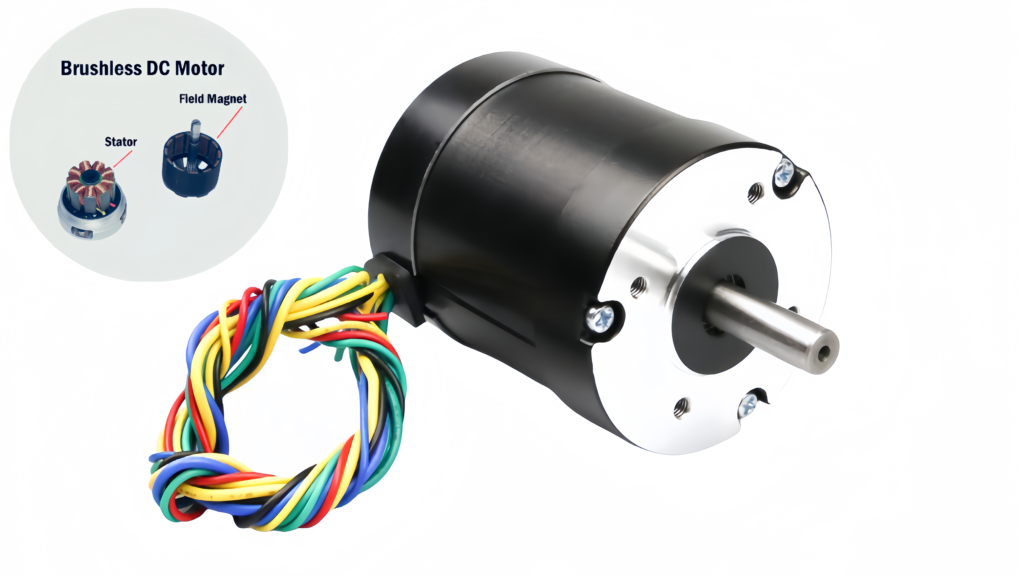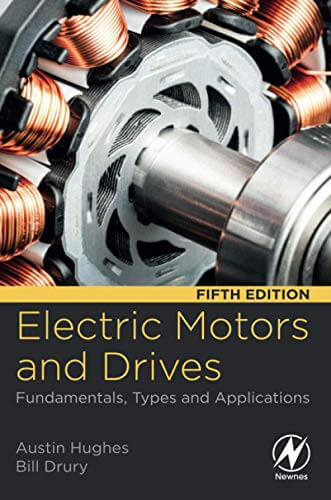Brushed vs Brushless DC Motors – Quick Answer
- If you need higher efficiency, longer life, and quiet operation, a brushless DC motor (BLDC) is the better choice.
- If you need a simple, low-cost drive and basic speed control, a brushed DC motor is often enough.
- Efficiency: BLDC is higher (often up to ~90%); brushed is lower due to brush friction.
- Maintenance: Brushed needs brush replacement; BLDC is virtually maintenance-free.
- Lifespan: BLDC is typically much longer (bearing-limited).
- Initial cost: Brushed is cheaper; BLDC costs more but saves over long duty cycles.
- Control: Brushed uses simple voltage/PWM; BLDC requires a driver/controller.
When choosing a DC motor, one of the most important distinctions to understand is the difference between brushed and brushless motors.
This comparison directly impacts efficiency, cost, maintenance, and long-term performance—factors that matter whether you’re sourcing motors for industrial equipment, consumer devices, or automated systems.
In this article, we’ll break down the practical differences between these two motor types, helping engineers, purchasing managers, and project leads make the right decision based on their real-world needs.
What is a Brushed DC Motor?
Brushed DC motors are based on a classic, time-tested design. These motors use carbon brushes and a commutator to deliver current to the motor windings, generating the magnetic field that drives the rotor.
Key Advantages:
- Simple construction and low manufacturing cost
- Easy to control
- Readily available in a wide range of sizes and voltages
Common Applications:
- Automotive accessories (e.g., window lifters, seat adjusters)
- Household tools and appliances (e.g., hair dryers, toys)
- Entry-level industrial equipment (e.g., pumps, fans)

Learn more about our Brush Gear DC Motor Series or Brushed DC Motor Options
What is a Brushless Motors?
Brushless DC motors (BLDC) use electronic commutation rather than physical brushes. They incorporate permanent magnets and advanced control electronics to deliver power more efficiently and precisely.
Key Advantages:
- Higher energy efficiency
- Less maintenance due to non-contact operation
- Longer lifespan and quieter performance
Common Applications:
- Robotics and automated systems
- Drones and electric vehicles
- Renewable energy (e.g., wind turbine systems)
- Medical and laboratory equipment

Learn more about our BLDC Motor Series
Brushed vs. Brushless: Side-by-Side Comparison
| Feature | Brushed DC Motor | Brushless DC Motor |
|---|---|---|
| Efficiency | Lower, due to brush friction | Higher, minimal internal losses |
| Maintenance | Needs brush replacement over time | Virtually maintenance-free |
| Lifespan | Shorter due to wear | Longer operational life |
| Noise Level | Moderate to high | Quiet operation |
| Initial Cost | More affordable upfront | Higher, but long-term savings |
| Speed Control | Basic control | Precise electronic control |
| Driver requirement | No external driver needed; simple PWM/voltage | Needs BLDC driver/controller |
| Low-speed smoothness | Acceptable with gearbox; noticeable commutation ripple | Very smooth with FOC/Sine drive |
| Total cost over time | Lower upfront, higher maintenance | Higher upfront, lower lifetime cost |
Table: Brushed vs Brushless DC Motor comparison — covering efficiency, maintenance, lifespan, cost, and control features to help you select the right motor for your application.
Which One Should You Choose?
- Choose a brushed DC motor if your project is cost-sensitive, runs at low to moderate duty, and you prefer simple control (e.g., pumps, fans, small tools).
- Choose a BLDC motor (brushless DC motor) if you need higher efficiency, long service life, and quiet/precise control under variable loads (e.g., medical devices, robotics, battery-powered systems).
- If space is limited or downtime is costly, a BLDC motor is usually the smarter investment.
- For high torque at low speed with basic electronics, a brushed gear DC motor can often be sufficient.
Still unsure which motor best fits your design?
👉 Talk to our engineers or explore our PMDC, Gear DC, and BLDC motor options to find the right match for your application.
FAQs: Brushed vs Brushless DC Motors
🔹 Are brushless motors always better than brushed motors?
Not necessarily. While brushless motors are more efficient and require less maintenance, brushed motors are often more cost-effective and suitable for simple or low-duty applications.
🔹 Which lasts longer, brushed or brushless DC motor?
Brushless DC motors typically last much longer because there are no brushes to wear—life is mainly limited by bearings and heat. A well-used brushed motor may need brush replacement during service; with proper maintenance it can still run reliably, but BLDC usually delivers the longest overall life.
🔹 Can I upgrade from a brushed motor to a brushless one in the same system?
It depends on your controller and space. Brushless motors often need a compatible driver/controller and may differ in size or mounting requirements.
🔹 Which motor type is quieter in operation?
Brushless motors are generally much quieter than brushed motors because there’s no friction from brushes.
🔹 Do brushless motors require any maintenance at all?
They require very little, but proper heat dissipation and controller matching are important to extend lifespan.
Summary
Understanding the difference between brushed and brushless DC motors helps you make smarter decisions when it comes to efficiency, cost, and reliability.
At RUITO, we provide both motor types in various configurations, ready to fit your needs.
Explore our full range:
Related Articles:

